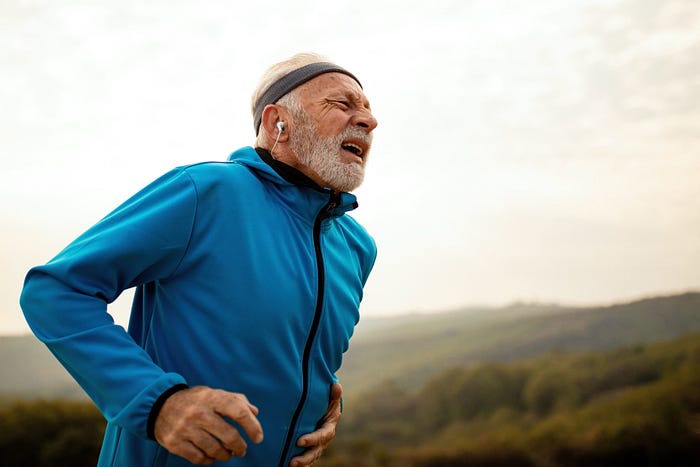Yes you heard it right, living in warm wet weather can increase your risk of harboring kidney stones. Called ‘The stone belt phenomenon’.

A kidney stone is formed when your urine contains more crystal forming substances, calcium, oxalate and uric acid.
There is a great deal of curiosity about how these horrifying little boulders form because of the expense, the steady rise in prevalence, and the excruciating discomfort.
What is the stone belt phenomenon?
We refer to the people living in the southeast as the “stone belt”. Apart from the southeast, People who are more prone to dehydration because of the warm weather. Dehydration can lead to fluid loss and low urine volume that facilitates the formation of stones. Unfortunately, once you form kidney stones, you are more likely to form stones again. Your body breaks down protein which increases uric acid levels which in turn may increase your risk of forming stones.
What Promotes Kidney Stones and Why Do We Get Kidney Stones?
According to the study’s authors, the body’s thermoregulation system struggles more in a warm and rainy environment than it does in a warm and dry climate, which increases the risk of kidney stones.
However, additional investigation will be required at this point to gain a clear picture of what’s happening.
The authors of the study mention the potential effects of global warming as an unsettling side note. Kidney stone prevalence is projected to increase as global average temperatures and precipitation are predicted to rise; this is yet another justification for purchasing an electric vehicle.
Therefore, your risk of developing kidney stones is slightly higher if you reside somewhere that is both hot and moist. You could always relocate to the Antarctic, which is the coldest and driest area on the planet, if this concept disturbs you. Alternatively, if that’s not your cup of tea, just make sure you’re getting enough water.
Certain antibiotics can increase kidney stone risk
According to a recent study, those who take specific oral antibiotics run a higher chance of acquiring kidney stones. The most impacted appear to be children and teenagers.
TREATMENT
How to treat kidney stones?
- The type of stone and cause determines the treatment.
- Small stones can be treated with drinking enough fluid, water in order to clear urine.
Pain killers: Passing small stones could cause some discomfort so your doctor may suggest pain relievers.
Medical Therapy: Your doctors might recommend medication. It might relax the muscles in the ureter, helping pass the kidney stone more quickly and with less pain.
Can kidney stones be treated just by diet?
Some people may be able to avoid kidney stones simply by making dietary modifications.
In other circumstances, extra therapy, such as drugs to break up the stones or surgery to remove the stones, may be required.
If the stones become excruciatingly painful, it is best to contact a doctor or nephrologist to determine the best course of action.
Large stones that causes symptoms
Where do you get kidney pain
Large stones cannot pass on their own. They can cause kidney stone symptoms; bleeding, UTI, kidney damage. These kinds of stones may require extensive treatment. Treatments may include:
- ESWL (extracorporeal sound wave lithotripsy)
- Sound waves are used in order to create strong vibrations. These vibrations break the stone to pass them on in the urine.
Surgery to remove large stones
Nephrolithotomy is a procedure that involves surgically removing a kidney stone. This procedure is done if ESWL is unsuccessful.
Scope: A thin scope(ureteroscope) equipped with a camera through your urethra and bladder to your ureter. After the stone is located, special tools can snare the stone or break it into pieces that will pass in your urine.
Kidney stones are ‘twice as likely’ to occur
According to Medical news The researchers examined the electronic health records of 13 million British adults and children who saw their doctor between 1994 and 2015.
The team compared the treatment histories of 26,000 persons with kidney stones to the health records of over 260,000 people who had not developed kidney stones (the controls).
The findings, which were published in the journal European Urology, revealed that females are far more susceptible to infection when suffering from urolithiasis. It also revealed that the prevalence of infection, especially sepsis (a potentially lethal swelling throughout the body that began as an infection), is increasing.
Analysis conducted by Medical news Today discovered a rise in the prevalence of infected urolithiasis in females from 15.5 per 100,000 to 27.6, and in men from 7.7 per 100,000 to 12.1.
Severe sepsis increased from 6.9% to 8.5% of urolithiasis patients, and severe sepsis increased from 1.7% to 3.2%.
Prevention
Risk factors for kidney stones
The research suggests there might be a connection between weight and kidney stones, even if this does not imply causation. In addition, the study’s authors think that metabolic issues including high blood pressure and excessive cholesterol may play a role in kidney stone development.
Continue consuming foods high in calcium, but exercise caution when taking calcium supplements. The amount of calcium in your diet has no bearing on your chance of developing kidney stones. Eat calcium-rich meals unless your doctor advises you otherwise.
Before taking calcium supplements — which have been linked to an increased risk of kidney stones — ask your doctor. You may reduce the risk by taking vitamins with meals. Low-calcium diets may increase the frequency of kidney stones in some persons.
Ask your doctor to recommend a dietitian who can help you create a diet that reduces your risk of kidney stones.
In order to avoid and treat kidney stones, it’s imperative to control body weight and consume a healthy, balanced diet.
A combination of lifestyle changes and medications can be done to practice prevention. Drinking lots of water, eating food rich in oxalates, planning a diet that is low in salt and animal protein.
